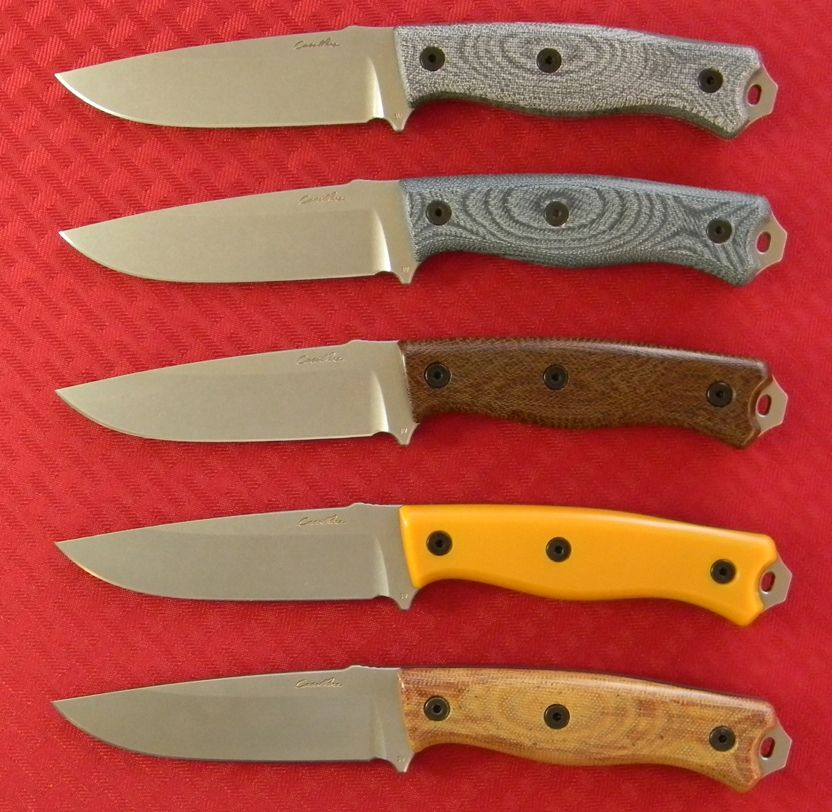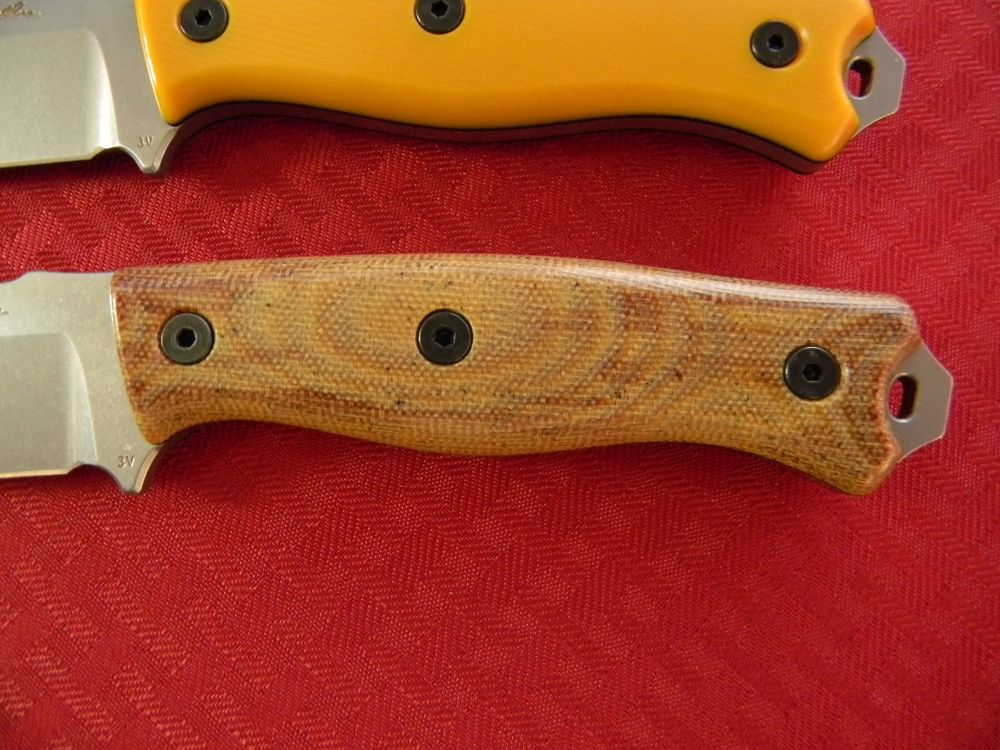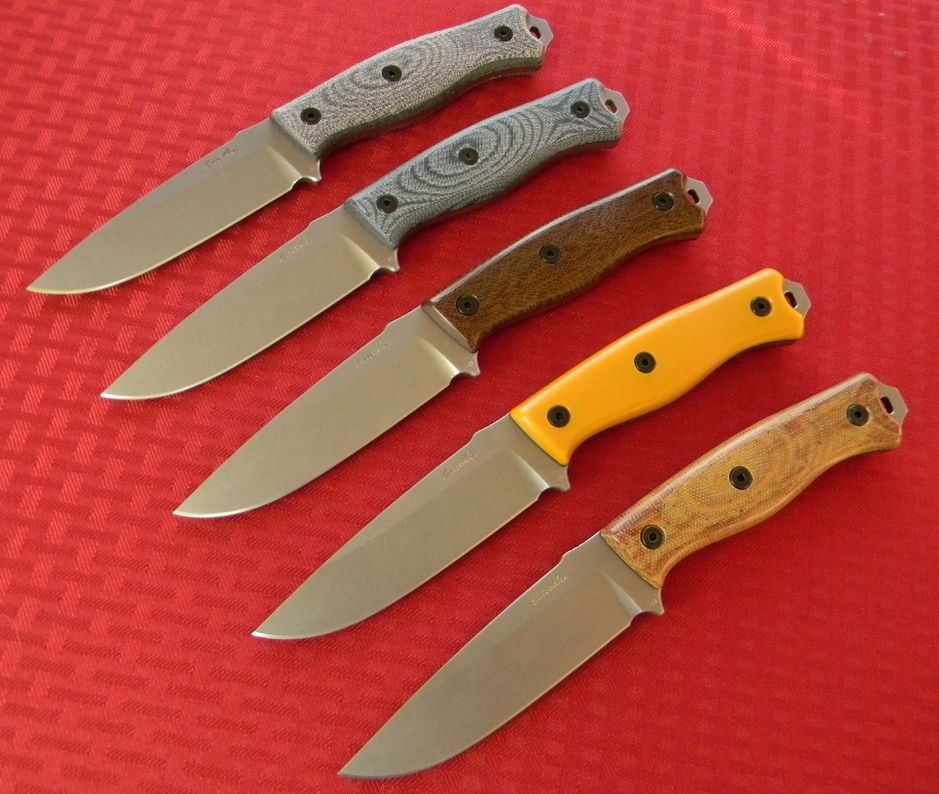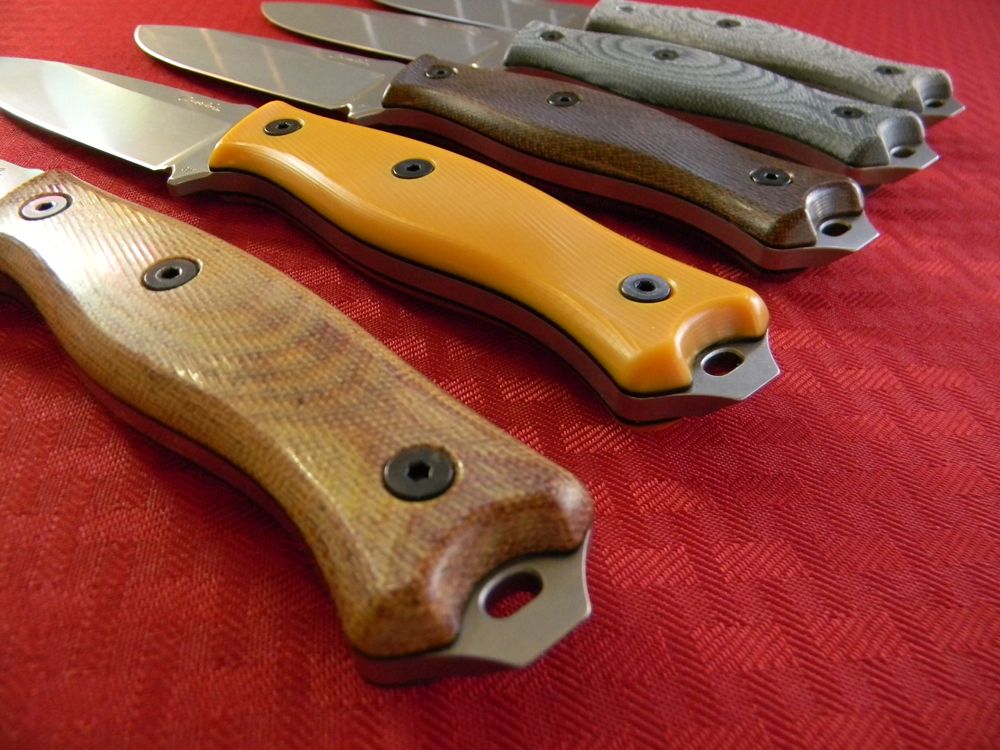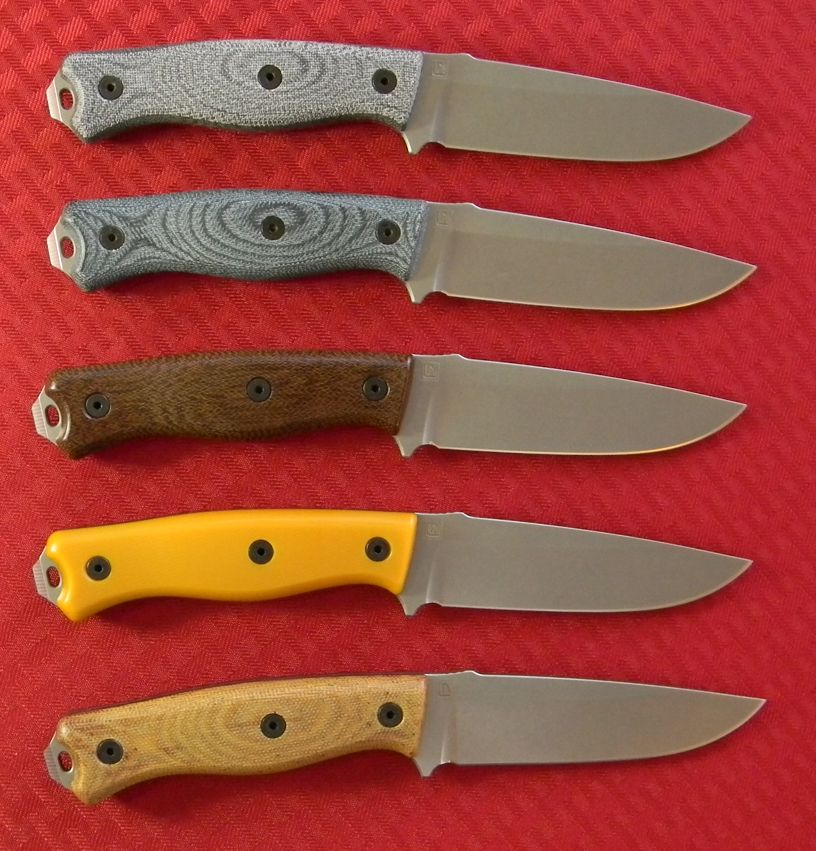Terotuf is a little bit ugly and unstable, but it's wonderful for scales on hard working knives because the way it performs when your hands are wet and sweaty. I laminated it to a thick micarta liner to reduce issues with it shrinking and exposing tang.
The denim micarta is actual Norplex Micarta. Norplex bought the name from Westinghouse but mostly imports material. My supplier assured me this was domestically produced and I wanted to try out a denim reinforced phenolic. It's laminated to a thin G10 liner.
There is no more vintage Micarta sheet anymore, but you can find drops, remnants, finished parts and odd shapes. These require some processing to make into scales.
The dark brown micarta came from an old stock round bar. I don't think it's dyed brown, I think it's just really old, and because it was turned the resin rich surface that seals out oxygen was missing so the darkness penetrated to the center of the bar. The canvas is yellowed. I could be mistaken, but I don't think its appearance is going to change much more over time, I think this is about as dark as it's going to get. I believe this material might be older than a lot of the people on this forum, but it's lineage is unknown. Its pretty though. I cut this piece to have edge grain rather than flat. Cool right?
The butterscotch micarta is from an old drop. The color will eventually turn brown over time.
The micarta on the bottom came from a drop of Westinghouse flat stock. The resin rich surface was intact, but oxygen seeped in through some of the fibers around the sides. Some of the color went pretty deep, creating the unusual mottled appearance. This is a fresh raw cut material that will brown some with age. It is the same Micarta used on this knife:
^ the pieces on the dagger were cherry picked from the very center to have a uniform color. That surface was already browning some when that picture was taken.











